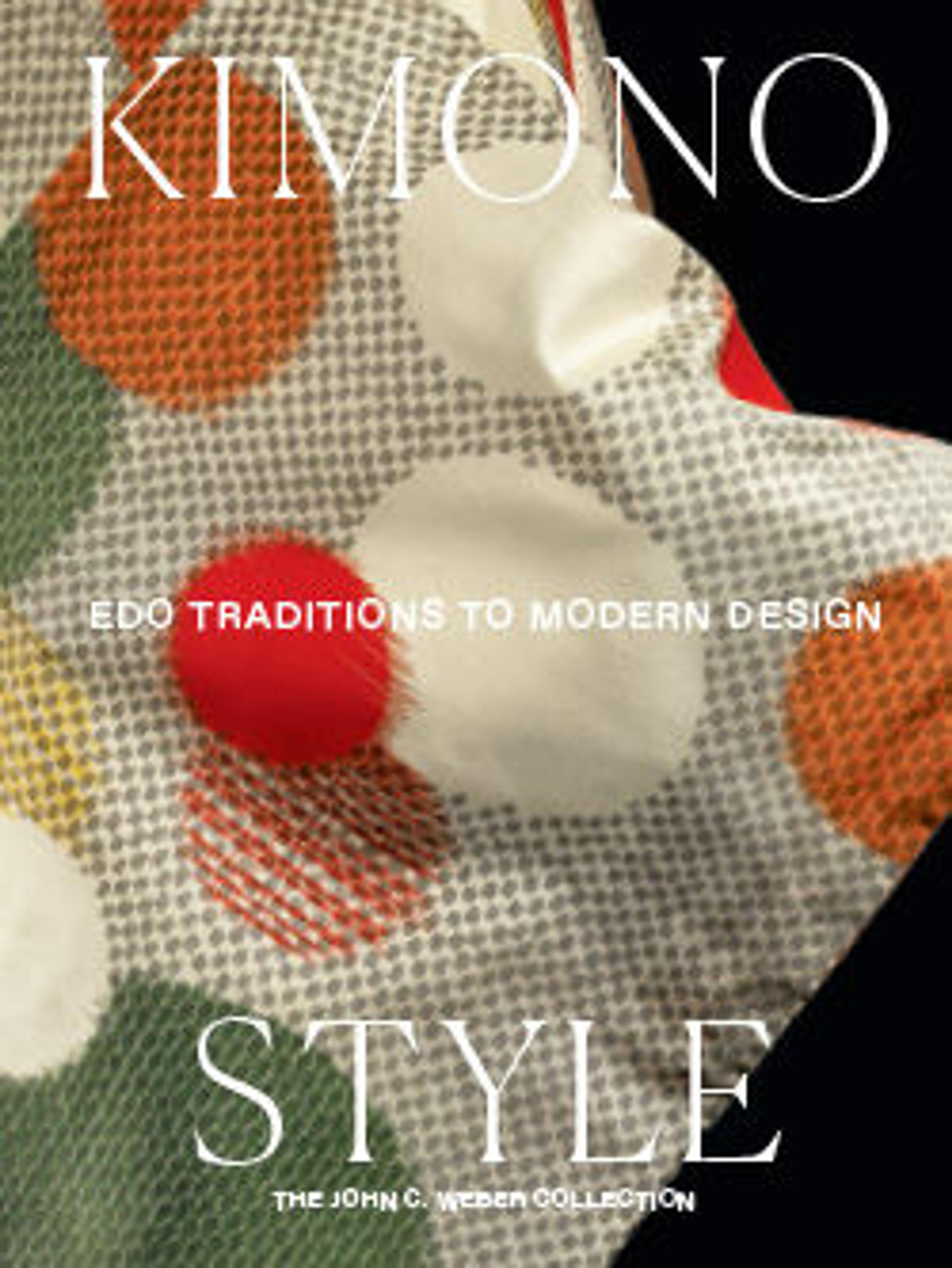Woman's Overrobe (Uchikake) with Books and Mandarin Orange Branches
Books with varying decorative covers appear amid the colorful fruit and flowers on the mandarin orange branches of this outer robe (uchikake). The presence of books reflects the rise in publishing and literacy during the Edo period, while the poetic and congratulatory themes of the covers evoke the aristocratic culture of the Heian period (794–1185) and auspicious patterns associated with celebration. See, for example, the dewy autumn grasses on the red book on the back of the right sleeve, and the cranes in flight on the white book on the back of the left sleeve.
In the late Edo period, outer robes of this type were made as formal garments for young women from wealthy merchant families to wear for weddings and special occasions.
In the late Edo period, outer robes of this type were made as formal garments for young women from wealthy merchant families to wear for weddings and special occasions.
Artwork Details
- 橘草紙散模様打掛
- Title:Woman's Overrobe (Uchikake) with Books and Mandarin Orange Branches
- Period:Edo period (1615–1868)
- Date:first half of the 19th century
- Culture:Japan
- Medium:Embroidery in silk and metallic thread; appliqué of resist-dyed (shibori) silk fabrics on silk satin damask
- Dimensions:ca. 70 in. (177.8 cm)
- Classification:Costumes
- Credit Line:Gift of Mr. and Mrs. Earl Morse, 1972
- Object Number:1972.18
- Curatorial Department: Asian Art
More Artwork
Research Resources
The Met provides unparalleled resources for research and welcomes an international community of students and scholars. The Met's Open Access API is where creators and researchers can connect to the The Met collection. Open Access data and public domain images are available for unrestricted commercial and noncommercial use without permission or fee.
To request images under copyright and other restrictions, please use this Image Request form.
Feedback
We continue to research and examine historical and cultural context for objects in The Met collection. If you have comments or questions about this object record, please contact us using the form below. The Museum looks forward to receiving your comments.
